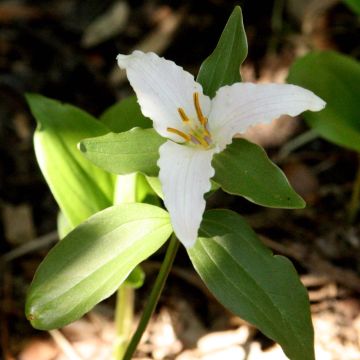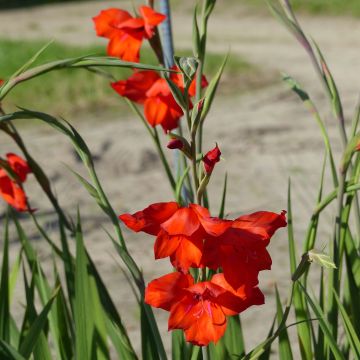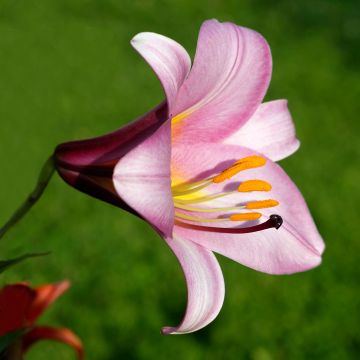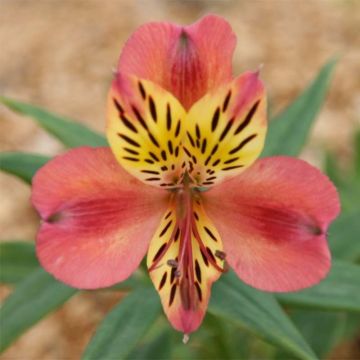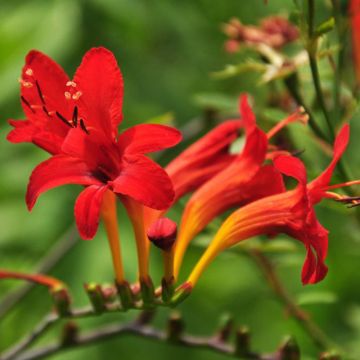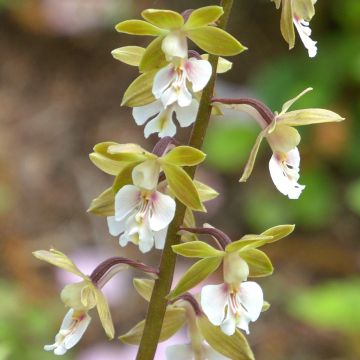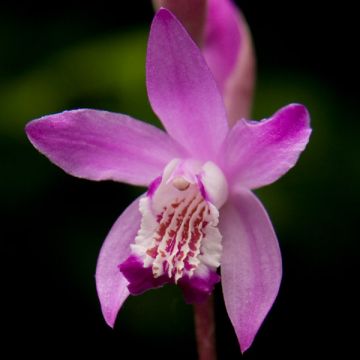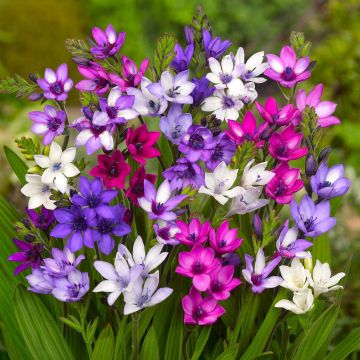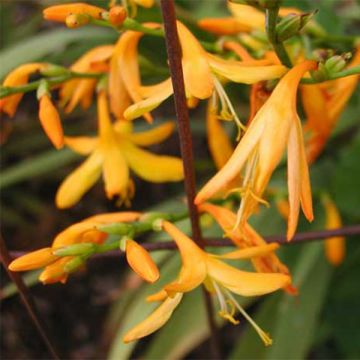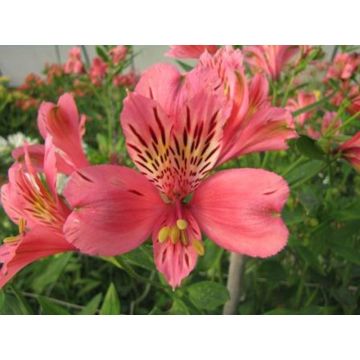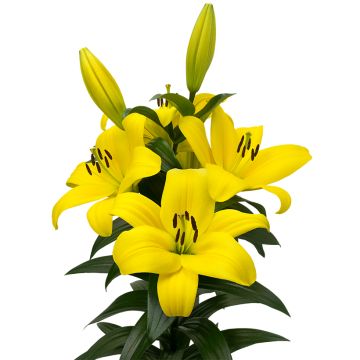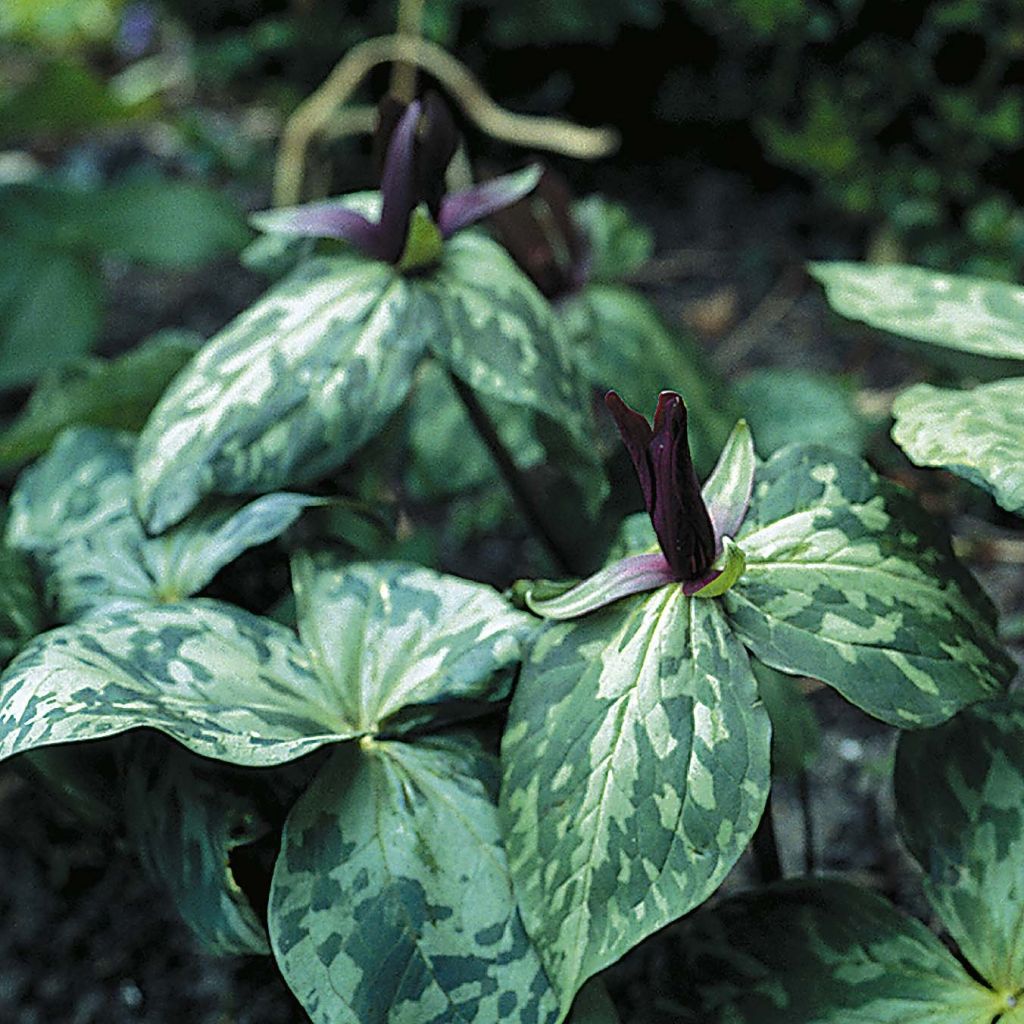

Trillium cuneatum
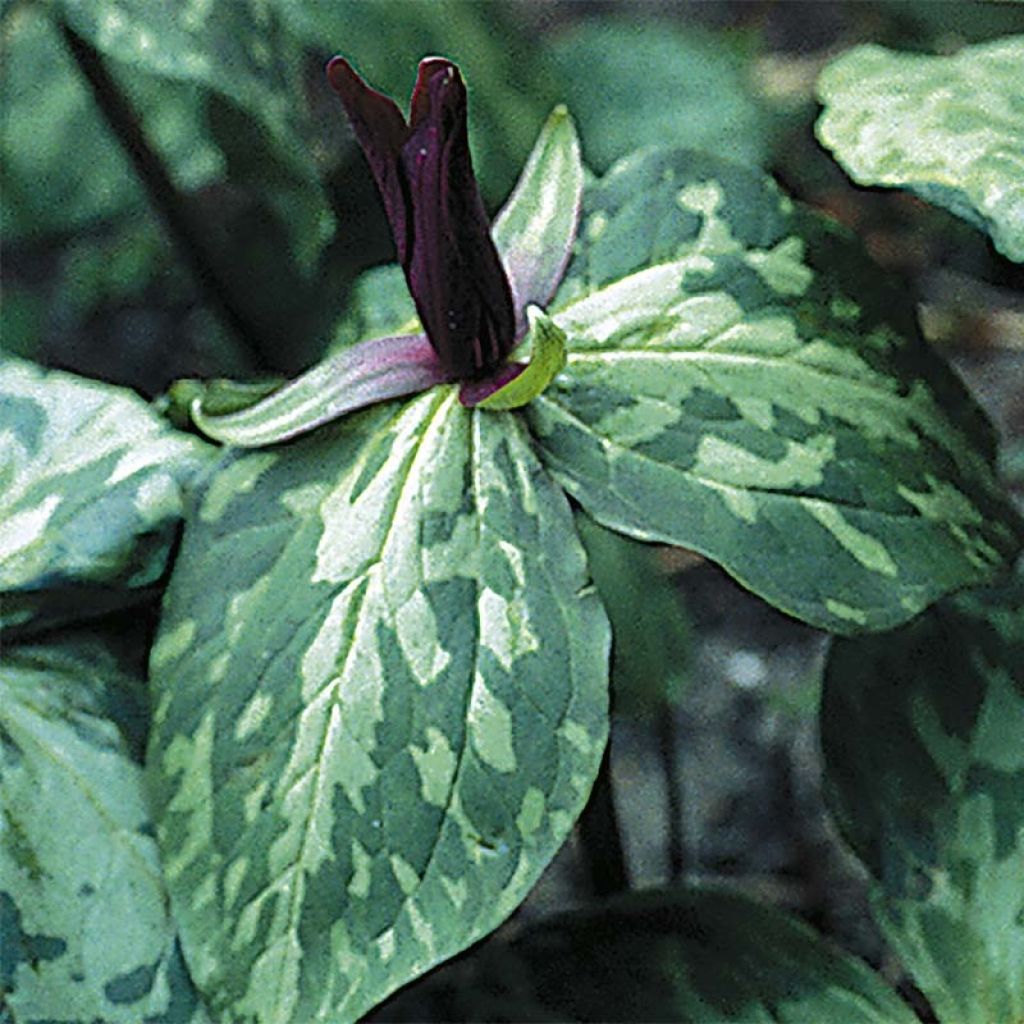

Trillium cuneatum
Trillium cuneatum
Trillium cuneatum
Little Sweet Betsy, Whip-poor-will Flower, Large Toadshade
This plant carries a 6 months recovery warranty
More information
We guarantee the quality of our plants for a full growing cycle, and will replace at our expense any plant that fails to recover under normal climatic and planting conditions.
From €5.90 for pickup delivery and €6.90 for home delivery
Express home delivery from €8.90.
Does this plant fit my garden?
Set up your Plantfit profile →
Description
Trillium cuneatum, also known as Trillium, is part of a group of small wild plants native to North America, quite rare in cultivation, which undoubtedly deserve to be tried in shaded and cool areas of our gardens. Simple and graceful, the cuneatum species has decorative foliage, distinctly spotted and marbled with pale green and a narrow, upright flower of variable colour, usually yellow-orange. A bit slow to establish, this trillium is a small, robust plant that spreads through its rhizome, eventually forming an unusual spring carpet in a wooded garden or a shady rockery.
Trillium cuneatum, formerly classified in the Lily family, now belongs to the Melanthiaceae family. It is a distant North American cousin of the fragrant Solomon's Seal that populates our European forests. It is native to the southeastern United States (North and South Carolina, Tennessee, southern Kentucky, and northern Georgia), where it blooms in the spring in the humus of deciduous forests but also on rocky banks, often near watercourses, on generally limestone soil. It readily hybridizes with Trillium luteum where the two species coexist.
Trilliums are very unique plants that do not develop true stems or leaves. The vegetation that emerges in the spring is actually just a flower, composed of an upright petiole, an extension of the rhizome, bearing a coloured flower that surmounts leaf-like bracts. The true leaves, tiny and scale-like, are found on the flower petiole.
As an herbaceous and perennial plant, Trillium cuneatum develops in the spring from a fleshy and thick underground rhizome that does not like to be disturbed. It goes dormant as soon as the soil dries out, either in the summer or in autumn due to the cold. The plant produces short and slender leafy stems, upright at 40cm (16in) from the ground. Thanks to its rhizomes, this Trillium slowly forms small colonies occupying about 40cm (16in) of ground. Each stem bears only 3 beautiful leaves inserted at the same level on the stem and arranged in a collar, horizontally. The leaves are round to lanceolate in shape, a beautiful vibrant green randomly marbled with pale green to almost white. They measure about 12cm (5in) long and 10cm (4in) wide. The flowering takes place in April-May, earlier or later depending on the climate, at the center of the trio of leaves. The upright flower, narrow and 4cm (2in) tall, is composed of 3 slightly twisted petals of yellow-orange colour surmounting 3 narrow green sepals, arranged in a staggered manner. This flowering attracts various pollinating insects. In Trilliums, the seeds are dispersed by ants. Plants grown from seeds can take several years before flowering.
A bit slow to establish, this Trillium cuneatum is nonetheless faithful, lives long, and requires little care where it thrives. It can be planted in groups of 3 specimens in shady areas or dappled sunlight (introduce multiple plants in a small area), in soil rich in humus or leaf compost that remains moist for as long as possible. It pairs well with other small perennials that enjoy similar conditions, such as Mertensia virginica, which has a lovely blue spring bloom. Plants with staggered flowering or interesting foliage will fill the soil in summer while the trillium rests underground: consider, for example, Ophiopogons, Roscoea, small ferns, Asarums, hostas, ... It can be grown in pots, with careful watering. Whether in the ground or in pots, it always pairs well with Begonia grandis subsp. evansiana which takes over the flowering.
Report an error about the product description
Trillium cuneatum in pictures
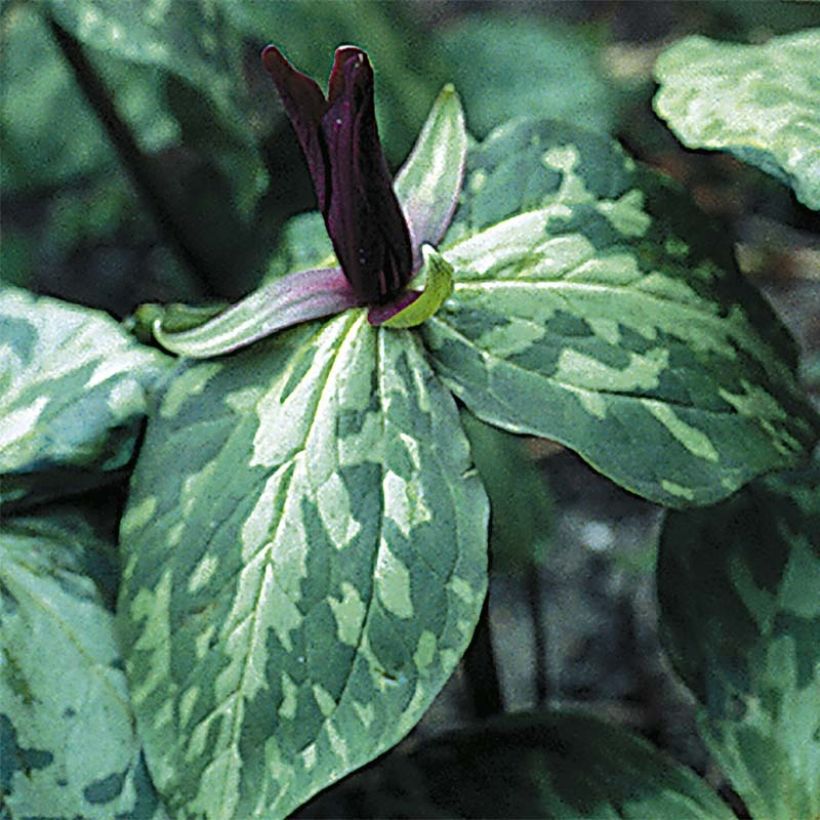

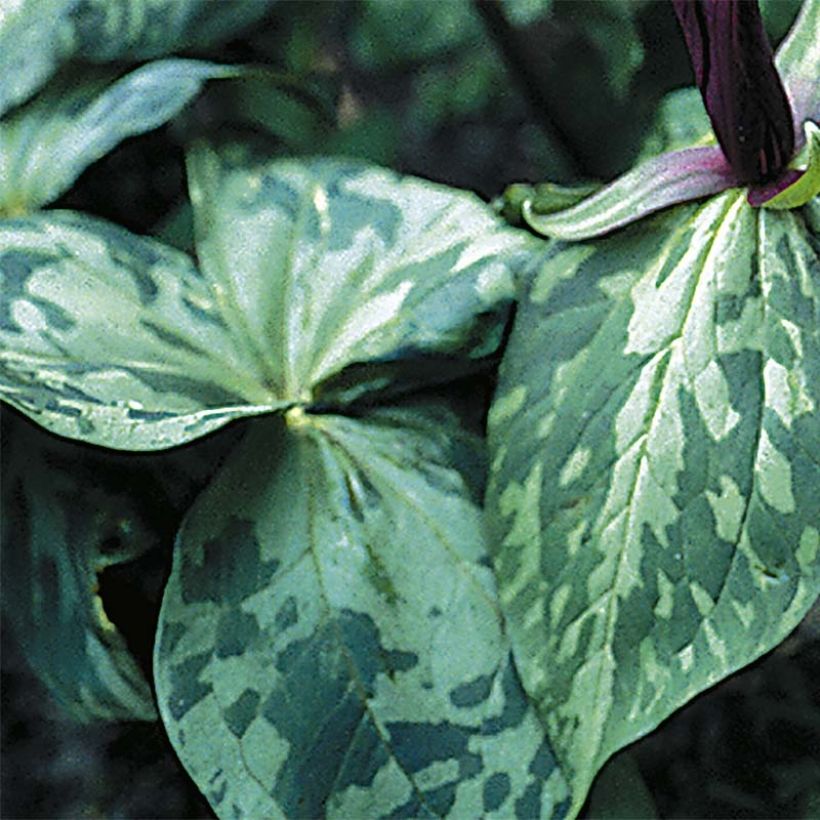

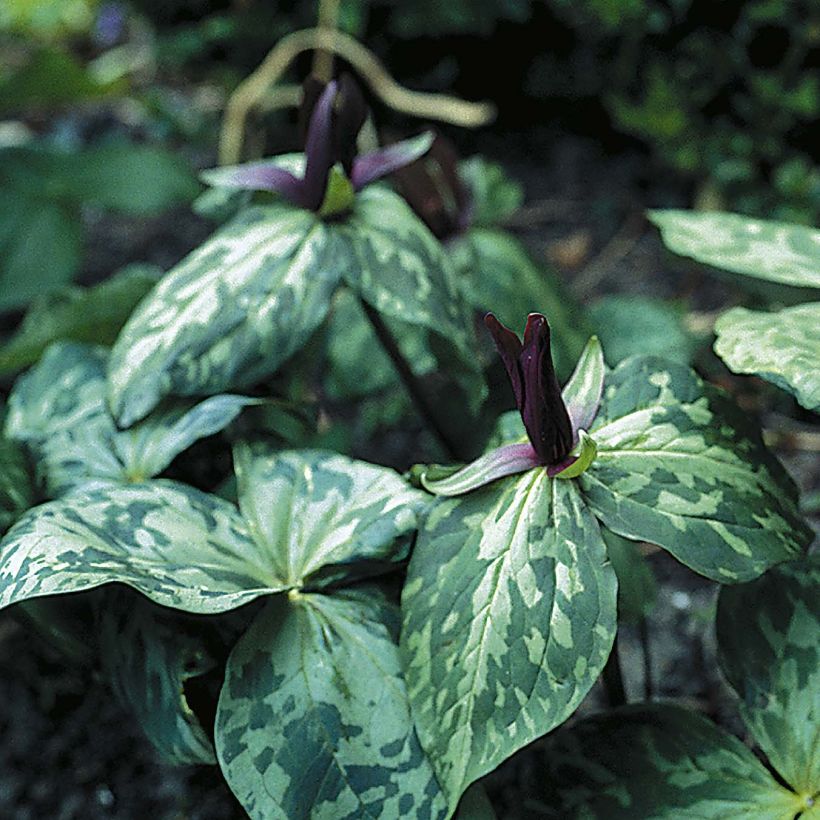

Plant habit
Flowering
Foliage
Botanical data
Trillium
cuneatum
Liliaceae (Melanthiaceae)
Little Sweet Betsy, Whip-poor-will Flower, Large Toadshade
North America
Other Trillium
Planting and care
Trillium cuneatum appreciates moist soils during its growth and flowering period. It prefers humus-rich soils, including those with a leaf compost base, even on limestone subsoils. Plant it in partial shade or not too dense shade. It requires sunlight during its flowering period, but shade in summer: the cover of deciduous trees or bushes with late foliage (Fraxinus, Tetradium, Robinia) is what suits it best. Plant it so that its rhizome is situated 5 or 7cm (2 or 3in) below the surface of the soil. Dig a large hole and add leaf compost and well-decomposed compost during planting. Ensure that the soil never dries out in summer, otherwise the plant may enter dormancy too quickly, which sometimes occurs in nature and does not harm the plant's health. Trillium cuneatum can withstand cold winters, even below -15°C (5°F), even without ground covering. Divide the clumps in spring, after a minimum of 5 to 6 years of cultivation.
This Trillium takes time to establish itself, and it is not uncommon to wait 2 years after planting before seeing it flower for the first time.
Gastropods (slugs and snails) can attack young shoots in spring: make sure to protect them.
Planting period
Intended location
Care
-
, onOrder confirmed
Reply from on Promesse de fleurs
Hardy summer bulbs
Haven't found what you were looking for?
Hardiness is the lowest winter temperature a plant can endure without suffering serious damage or even dying. However, hardiness is affected by location (a sheltered area, such as a patio), protection (winter cover) and soil type (hardiness is improved by well-drained soil).

Photo Sharing Terms & Conditions
In order to encourage gardeners to interact and share their experiences, Promesse de fleurs offers various media enabling content to be uploaded onto its Site - in particular via the ‘Photo sharing’ module.
The User agrees to refrain from:
- Posting any content that is illegal, prejudicial, insulting, racist, inciteful to hatred, revisionist, contrary to public decency, that infringes on privacy or on the privacy rights of third parties, in particular the publicity rights of persons and goods, intellectual property rights, or the right to privacy.
- Submitting content on behalf of a third party;
- Impersonate the identity of a third party and/or publish any personal information about a third party;
In general, the User undertakes to refrain from any unethical behaviour.
All Content (in particular text, comments, files, images, photos, videos, creative works, etc.), which may be subject to property or intellectual property rights, image or other private rights, shall remain the property of the User, subject to the limited rights granted by the terms of the licence granted by Promesse de fleurs as stated below. Users are at liberty to publish or not to publish such Content on the Site, notably via the ‘Photo Sharing’ facility, and accept that this Content shall be made public and freely accessible, notably on the Internet.
Users further acknowledge, undertake to have ,and guarantee that they hold all necessary rights and permissions to publish such material on the Site, in particular with regard to the legislation in force pertaining to any privacy, property, intellectual property, image, or contractual rights, or rights of any other nature. By publishing such Content on the Site, Users acknowledge accepting full liability as publishers of the Content within the meaning of the law, and grant Promesse de fleurs, free of charge, an inclusive, worldwide licence for the said Content for the entire duration of its publication, including all reproduction, representation, up/downloading, displaying, performing, transmission, and storage rights.
Users also grant permission for their name to be linked to the Content and accept that this link may not always be made available.
By engaging in posting material, Users consent to their Content becoming automatically accessible on the Internet, in particular on other sites and/or blogs and/or web pages of the Promesse de fleurs site, including in particular social pages and the Promesse de fleurs catalogue.
Users may secure the removal of entrusted content free of charge by issuing a simple request via our contact form.
The flowering period indicated on our website applies to countries and regions located in USDA zone 8 (France, the United Kingdom, Ireland, the Netherlands, etc.)
It will vary according to where you live:
- In zones 9 to 10 (Italy, Spain, Greece, etc.), flowering will occur about 2 to 4 weeks earlier.
- In zones 6 to 7 (Germany, Poland, Slovenia, and lower mountainous regions), flowering will be delayed by 2 to 3 weeks.
- In zone 5 (Central Europe, Scandinavia), blooming will be delayed by 3 to 5 weeks.
In temperate climates, pruning of spring-flowering shrubs (forsythia, spireas, etc.) should be done just after flowering.
Pruning of summer-flowering shrubs (Indian Lilac, Perovskia, etc.) can be done in winter or spring.
In cold regions as well as with frost-sensitive plants, avoid pruning too early when severe frosts may still occur.
The planting period indicated on our website applies to countries and regions located in USDA zone 8 (France, United Kingdom, Ireland, Netherlands).
It will vary according to where you live:
- In Mediterranean zones (Marseille, Madrid, Milan, etc.), autumn and winter are the best planting periods.
- In continental zones (Strasbourg, Munich, Vienna, etc.), delay planting by 2 to 3 weeks in spring and bring it forward by 2 to 4 weeks in autumn.
- In mountainous regions (the Alps, Pyrenees, Carpathians, etc.), it is best to plant in late spring (May-June) or late summer (August-September).
The harvesting period indicated on our website applies to countries and regions in USDA zone 8 (France, England, Ireland, the Netherlands).
In colder areas (Scandinavia, Poland, Austria...) fruit and vegetable harvests are likely to be delayed by 3-4 weeks.
In warmer areas (Italy, Spain, Greece, etc.), harvesting will probably take place earlier, depending on weather conditions.
The sowing periods indicated on our website apply to countries and regions within USDA Zone 8 (France, UK, Ireland, Netherlands).
In colder areas (Scandinavia, Poland, Austria...), delay any outdoor sowing by 3-4 weeks, or sow under glass.
In warmer climes (Italy, Spain, Greece, etc.), bring outdoor sowing forward by a few weeks.

































